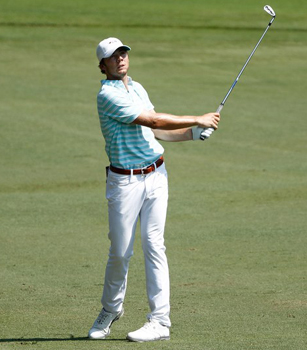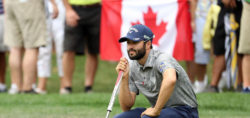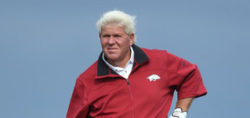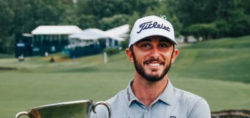Why Did The USGA Omit The NCAA POY From The Walker Cup Team?

Sometimes, there are decisions made that are unquestionably questionable. When all reasoning points to a common sense outcome yet is still not enough.
He was fifth at the Northeast Amateur and, having won a sponsor’s exemption into the Barbasol Championship through a 18-hole qualifying event, he went on to finish T-6 in the PGA Tour event in July held opposite the British Open. He ranked 21st in the World Amateur Golf Ranking heading last week at Riviera Country Club, where he finished T-16 in stroke-play qualifying before losing in the first round of match play.
Burns announced he wouldn’t be turning pro until the end of the summer, hoping that his impressive college resume would be enough for him to make squad.
Hmmm. Thinking that timeline might now quicken.
Burns posted all the correct PC reactions one would expect.
Never been more motivated, thank you @USGA @WalkerCup for the opportunity to be considered for the team. Wish you guys only the best🇺🇸🇺🇸
— Sam Burns (@Samburns66) August 21, 2017
However, there were many that believe the USGA (again!) are out of their collective minds.
Wait what??? How is Sam Burns not on this team…. https://t.co/G4rwQ5SImx
— Smylie Kaufman (@SmylieKaufman10) August 21, 2017
I don’t pretend to be a college golf expert. But when Sam Burns is D1 POY and doesn’t get named to Walker Cup team, that seems pretty wrong.
— Jason Sobel (@JasonSobelESPN) August 21, 2017
Even John (Spider) Miller, captain of the U.S. team, was on the outside looking in on the decision making process, as he does not have a formal vote on who makes the team.
A few other players with solid resumes were also left off the team: Dylan Meyer, the 2016 Western Amateur champ and the No. 4 ranked amateur in the world; Brad Dalke, the 2016 U.S. Amateur runner-up; and Scott Harvey, a former U.S. Mid-Amateur champion who qualified for this summer’s U.S. Open and played on the 2015 Walker Cup team.
PGATour.com’s Ryan Lavner pulls no punches on the near scandalous reasons for the USGA’s selections.
Though it operates with the secrecy of a special-ops unit, the committee does not make these decisions lightly. But Burns’ situation was a reminder of the ramifications, both financial and professional, and why it’s imperative that the USGA makes a few necessary changes.
By almost any metric, Burns should have been a lock for the U.S. team. Three months ago, the LSU sophomore earned the Nicklaus Award, given to the top college player. Drawing significant interest from sponsors and tournament directors, he could have turned pro in June but opted instead to wait until after the Walker Cup in September. It should not have been a risk, but that decision proved costly: Last month he played the Barbasol Championship, an opposite-field event on the PGA Tour, and tied for sixth. Because he was an amateur, however, he forfeited a $113,000 payday and sacrificed other playing opportunities.
Burns was the Division I player of the year. He remained amateur through the summer. He starred in a Tour event. It’s unclear what else he could have done to show the committee how much making the team meant to him, save for getting an American flag tattoo.
In previous Walker Cup years, the committee has named a handful of players before the Western Amateur, then filled out the rest of the squad after the U.S. Amateur. Burns surely would have been a strong candidate for one of the first few spots, but Miller lobbied to announce the team all at one time, not only to avoid the perception of two tiers but to keep players motivated heading into the two biggest amateur events on the schedule.
The USGA continues stumbling over its own out-of-touch way these days.






